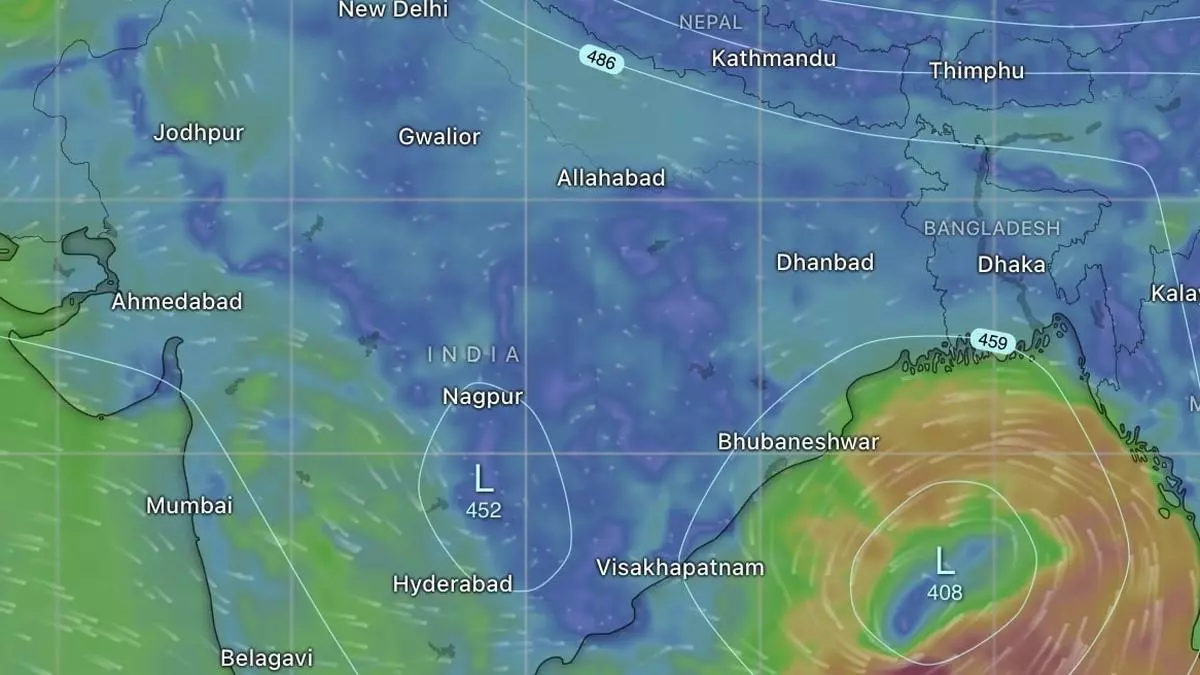Cyclone Remal likely to make a landfall on West Bengal-Bangladesh coast by Sunday midnight, says IMD
The depression over East-Central Bay of Bengal intensified into a deep depression, which puts it only a step away from full-fledged cyclone status, and lay centred early this (Saturday) morning over East-Central Bay, about 490 km South of Khepupara (Bangladesh), 380 km South-South-East of Sagar Islands and 530 km South-South-East of Canning (both West Bengal).
Landfall coordinates
It is likely to move nearly northwards and intensify into a cyclone (to be called ‘Remal,’ a name contributed by Oman) over East-Central and adjoining North Bay by this (Saturday) evening. It may continue to move nearly northwards, intensify into a severe cyclone over North-West and adjoining North-East Bay by tomorrow (Sunday) morning. India Meteorological Department (IMD) expects it to cross Bangladesh and adjoining West Bengal coasts between Sagar Island and Khepupara by midnight on Sunday as a severe cyclone storm with wind speeds of 110-120 km/hr gusting to 135 km/hr.
Rapid intensification
Vishwas Chitale, Senior Programme Lead, Council on Energy, Environment, and Water (CEEW), a leading climate think-tank, said while predicting the exact impact from cyclone Remal is challenging, Bay of Bengal cyclones have undergone rapid intensification in recent years.
A CEEW study analysing occurrence of cyclones over the last five decades found districts on the East Coast exposed to the impacts of cyclones. However, the government has been strengthening the adaptive capacity of local stakeholders to reduce the degree of the loss through initiatives like the National Cyclone Risk Mitigation Project (NCRMP).
Early warning systems
“Our research indicates that 100 per cent of the population exposed to cyclones now has access to early warning systems (EWS). Building on the success of reducing cyclone-related fatalities, India needs to develop frameworks to climate-proof critical infrastructure,” Chitale told businessline. According to a CEEW study, West Bengal has a high adaptive capacity against cyclones because of cyclone multi-hazard EWS, made available under the NCRMP Phase II. Further, the state’s high tele-density ratio allows people to access early warnings via telephone or mobile, he added.
